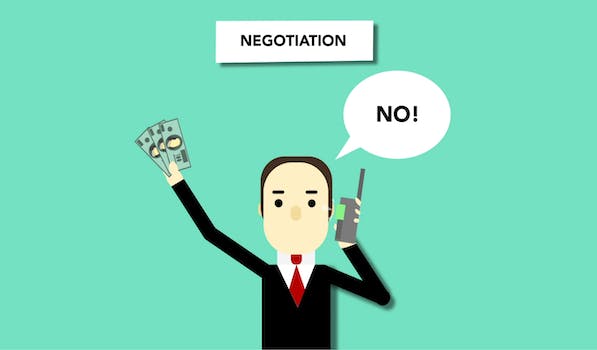How To Start A Business Cafe
“From beans to business: A step-by-step guide to opening your own cafe.”
Introduction
Starting a business cafe can be an exciting and rewarding venture. However, it requires careful planning and execution to ensure success. In this guide, we will provide you with some essential steps to help you start your own business cafe.
Finding the Perfect Location for Your Cafe
Starting a business cafe can be an exciting and rewarding venture. However, one of the most important decisions you will make is choosing the perfect location for your cafe. The location of your cafe can make or break your business, so it’s important to take the time to find the right spot.
The first step in finding the perfect location for your cafe is to determine your target market. Who do you want to attract to your cafe? Are you targeting students, professionals, or families? Once you have identified your target market, you can start looking for locations that will appeal to them.
One of the most important factors to consider when choosing a location for your cafe is foot traffic. You want to choose a location that is easily accessible and visible to potential customers. Look for areas with high foot traffic, such as busy streets, shopping centers, or near public transportation.
Another important factor to consider is the competition. You don’t want to open your cafe in an area that is already saturated with coffee shops and cafes. Instead, look for areas where there is a demand for coffee and food, but not a lot of competition.
The size of the space is also an important consideration. You want to choose a location that is large enough to accommodate your customers, but not so large that it becomes difficult to manage. Consider the layout of the space and how it will work for your business. Will you need a kitchen, seating area, or outdoor space?
The cost of the space is also an important consideration. You want to choose a location that is affordable and fits within your budget. Consider the rent, utilities, and other expenses associated with the space.
Once you have identified a few potential locations, it’s important to do your research. Visit the area at different times of the day to get a sense of the foot traffic and potential customers. Talk to other business owners in the area to get their perspective on the location.
It’s also important to consider the zoning laws and regulations in the area. Make sure that the location you choose is zoned for a cafe or restaurant. You may also need to obtain permits and licenses before you can open your business.
In addition to the location itself, it’s important to consider the surrounding area. Look for areas with a high concentration of your target market. Consider the demographics of the area, such as age, income, and education level.
Finally, it’s important to consider the overall vibe of the area. You want to choose a location that fits with the atmosphere and culture of your cafe. Consider the style and decor of the surrounding businesses and how your cafe will fit in.
In conclusion, finding the perfect location for your business cafe is a crucial step in starting your business. Consider your target market, foot traffic, competition, size, cost, zoning laws, surrounding area, and overall vibe when choosing a location. With careful consideration and research, you can find the perfect spot for your cafe and set yourself up for success.
Creating a Menu that Stands Out

Starting a business cafe can be an exciting and rewarding venture. However, it can also be a daunting task, especially when it comes to creating a menu that stands out. A menu is the heart of any cafe, and it is what attracts customers and keeps them coming back. In this article, we will discuss some tips on how to create a menu that stands out and sets your business cafe apart from the competition.
The first step in creating a menu that stands out is to do your research. You need to know your target market and what they like. This means understanding their tastes, preferences, and dietary requirements. You can do this by conducting surveys, talking to your customers, and researching your competition. This will help you to create a menu that caters to your customers’ needs and preferences.
Once you have done your research, it’s time to start brainstorming menu ideas. You want to create a menu that is unique and different from what your competition is offering. This means thinking outside the box and coming up with creative and innovative menu items. You can do this by experimenting with different ingredients, flavors, and cooking techniques. You can also draw inspiration from different cuisines and cultures.
When creating your menu, it’s important to keep it simple and easy to read. You don’t want to overwhelm your customers with too many options or complicated descriptions. Instead, focus on a few signature dishes that are well-executed and delicious. You can also offer daily specials or seasonal items to keep your menu fresh and exciting.
Another important aspect of creating a menu that stands out is to use high-quality ingredients. Customers are willing to pay more for food that is made with fresh, locally sourced, and organic ingredients. This not only enhances the flavor of your dishes but also shows that you care about the quality of your food. You can also use unique and exotic ingredients to add a touch of excitement to your menu.
In addition to using high-quality ingredients, it’s important to offer a variety of options for different dietary requirements. This means catering to customers who are vegetarian, vegan, gluten-free, or have other dietary restrictions. You can do this by offering a range of dishes that are specifically designed for these customers. You can also offer substitutions or modifications to existing dishes to accommodate their needs.
Finally, it’s important to price your menu items appropriately. You want to offer value for money while still making a profit. This means finding a balance between quality and affordability. You can do this by offering different portion sizes or meal deals. You can also offer loyalty programs or discounts to encourage repeat business.
In conclusion, creating a menu that stands out is essential for any business cafe. It requires research, creativity, and a focus on quality and customer satisfaction. By following these tips, you can create a menu that sets your business cafe apart from the competition and attracts loyal customers. Remember, a great menu is the heart of any successful cafe, so take the time to get it right.
Building a Strong Brand Identity
Starting a business cafe can be an exciting and rewarding venture. However, it requires careful planning and execution to ensure success. One of the most important aspects of starting a business cafe is building a strong brand identity. A strong brand identity can help your cafe stand out from the competition and attract loyal customers. In this article, we will discuss some tips on how to build a strong brand identity for your business cafe.
The first step in building a strong brand identity is to define your target audience. Who are your ideal customers? What are their needs and preferences? Understanding your target audience will help you tailor your brand identity to their needs and preferences. For example, if your target audience is health-conscious millennials, you may want to focus on offering healthy and organic food options.
Once you have defined your target audience, the next step is to create a unique brand name and logo. Your brand name and logo should be memorable, easy to pronounce, and visually appealing. It should also reflect the values and personality of your cafe. For example, if your cafe is all about sustainability and eco-friendliness, your brand name and logo should reflect that.
In addition to a brand name and logo, you should also develop a brand voice and tone. Your brand voice and tone should be consistent across all your marketing materials, including your website, social media, and advertising. It should also reflect the personality and values of your cafe. For example, if your cafe is all about fun and playfulness, your brand voice and tone should be light-hearted and humorous.
Another important aspect of building a strong brand identity is to create a unique and memorable customer experience. This includes everything from the decor and ambiance of your cafe to the quality of your food and service. Your customer experience should be consistent with your brand identity and tailored to your target audience. For example, if your cafe is all about luxury and sophistication, your customer experience should reflect that.
Finally, you should leverage social media and other digital marketing channels to promote your brand identity. This includes creating a strong presence on social media platforms like Facebook, Instagram, and Twitter. You should also create a website that reflects your brand identity and showcases your menu, services, and customer reviews. Additionally, you should consider investing in paid advertising to reach a wider audience.
In conclusion, building a strong brand identity is essential for the success of your business cafe. It requires careful planning and execution, including defining your target audience, creating a unique brand name and logo, developing a brand voice and tone, creating a unique and memorable customer experience, and leveraging social media and other digital marketing channels. By following these tips, you can create a strong brand identity that will help your cafe stand out from the competition and attract loyal customers.
Hiring and Training Your Staff
Starting a business cafe can be an exciting and rewarding venture. However, it can also be a daunting task, especially when it comes to hiring and training your staff. Your employees are the backbone of your business, and it’s essential to get the right people on board from the start. Here are some tips on how to hire and train your staff for your business cafe.
1. Define Your Needs
Before you start hiring, it’s essential to define your needs. What positions do you need to fill? What are the job responsibilities? What qualifications and skills are required? Once you have a clear understanding of your needs, you can start looking for candidates who meet your requirements.
2. Advertise Your Job Openings
There are many ways to advertise your job openings, including online job boards, social media, and local newspapers. Be sure to include a detailed job description and the qualifications required. You can also ask for referrals from friends and family or post flyers in your local community.
3. Conduct Interviews
Once you receive applications, it’s time to conduct interviews. This is your chance to get to know the candidates and assess their qualifications and skills. Be sure to ask open-ended questions that allow the candidate to showcase their experience and personality. You can also ask situational questions to see how they would handle certain scenarios.
4. Check References
Before making a job offer, it’s essential to check references. This will give you a better understanding of the candidate’s work history and performance. Be sure to ask specific questions related to the job responsibilities and qualifications required.
5. Provide Training
Once you have hired your staff, it’s time to provide training. This is your chance to teach your employees about your business, your products, and your customer service expectations. Be sure to provide hands-on training and allow your employees to ask questions and provide feedback.
6. Set Expectations
It’s essential to set expectations for your employees from the start. This includes job responsibilities, performance expectations, and customer service standards. Be sure to provide clear guidelines and feedback to help your employees succeed.
7. Foster a Positive Work Environment
A positive work environment is essential for employee satisfaction and retention. Be sure to create a welcoming and supportive atmosphere for your staff. Encourage open communication, provide opportunities for growth and development, and recognize and reward good performance.
Starting a business cafe can be a challenging task, but with the right hiring and training strategies, you can build a successful team. Remember to define your needs, advertise your job openings, conduct interviews, check references, provide training, set expectations, and foster a positive work environment. With these tips, you can create a team that will help your business thrive.
Marketing Your Cafe to Attract Customers
Starting a business cafe can be an exciting and rewarding venture. However, it’s important to remember that opening a cafe is not just about serving great coffee and food. You also need to market your cafe effectively to attract customers. In this article, we’ll discuss some tips on how to market your cafe and attract customers.
Firstly, it’s important to identify your target market. Who are the people you want to attract to your cafe? Are they students, professionals, or families? Once you have identified your target market, you can tailor your marketing efforts to appeal to them. For example, if your target market is students, you could offer a student discount or promote your cafe as a study-friendly environment.
Secondly, you need to create a strong brand identity for your cafe. Your brand identity should reflect the values and personality of your cafe. This includes your logo, color scheme, and overall aesthetic. Your brand identity should be consistent across all your marketing materials, including your website, social media, and signage.
Thirdly, you need to have a strong online presence. In today’s digital age, having a website and social media presence is essential for any business. Your website should be easy to navigate and provide all the necessary information about your cafe, such as your menu, opening hours, and location. Your social media accounts should be regularly updated with engaging content, such as photos of your food and drinks, promotions, and events.
Fourthly, you should consider partnering with other businesses in your local area. This could include collaborating with a nearby bookstore to host a book club or teaming up with a local gym to offer a healthy meal plan. By partnering with other businesses, you can tap into their customer base and attract new customers to your cafe.
Fifthly, you should consider hosting events and promotions to attract customers. This could include hosting a trivia night, live music, or a themed night. You could also offer promotions, such as a buy-one-get-one-free deal or a loyalty program. By offering unique events and promotions, you can create a buzz around your cafe and attract new customers.
Lastly, you should focus on providing excellent customer service. Word of mouth is a powerful marketing tool, and happy customers are more likely to recommend your cafe to their friends and family. Make sure your staff are friendly and knowledgeable about your menu, and that your cafe is clean and welcoming.
In conclusion, marketing your cafe is essential for attracting customers and building a successful business. By identifying your target market, creating a strong brand identity, having a strong online presence, partnering with other businesses, hosting events and promotions, and providing excellent customer service, you can create a buzz around your cafe and attract new customers. Remember, opening a cafe is not just about serving great coffee and food – it’s also about creating a memorable experience for your customers.
Conclusion
Starting a business cafe requires careful planning and execution. It is important to conduct market research, create a solid business plan, secure funding, and choose a strategic location. Additionally, hiring the right staff, offering quality products and services, and implementing effective marketing strategies are crucial for success. With dedication, hard work, and a passion for the industry, starting a business cafe can be a rewarding and profitable venture.






